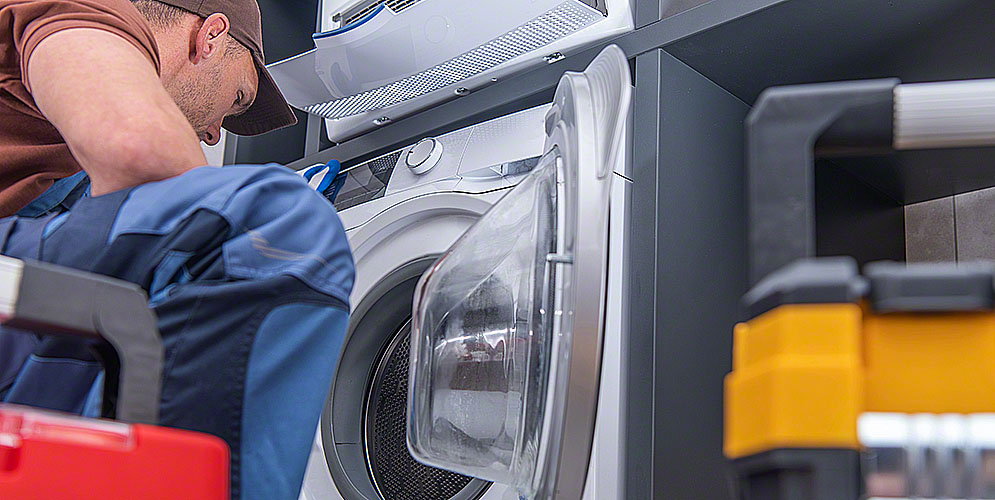
Kitchen Appliance Repair Precautions
In every household, the kitchen stands as a central point of action. Kitchen gadgets, from fridges that preserve our edibles to ovens that assist in preparing savory dishes, are crucial in our everyday routines. Nevertheless, when these indispensable instruments begin to falter, the impulse to handle the appliance repair will arise. Although tackling minor fixes, like mending a fridge’s ice maker, on one’s own has its advantages, it’s critical to proceed with caution.
Precautions for Fixing Kitchen Equipment
The process of fixing kitchen gadgets involves complex components, electrical connections, and occasionally, water, presenting a scenario where prioritizing safety is imperative. Here are some vital safety measures everyone should consider before initiating repairs.
- Disconnect and Shut Down: Ensure the gadget is disconnected from its power source before attempting any repairs. This precaution, although basic, is vital for preventing electric shocks. For gadgets powered by gas, it’s equally crucial to cut off the gas supply.
- Comprehend the Issue: Dedicate some time to understand the malfunction before disassembling the gadget. A thorough comprehension can aid in addressing the correct issue efficiently.
- Utilize Appropriate Instruments: Using the correct tools not only facilitates safety but also ensures the repair process is efficient. Refrain from improvising with inappropriate tools, as they could lead to further damage or personal harm.
- Steer Clear of Water: The combination of water and electricity poses significant risks. If the gadget is situated near any water sources, ensure the area is completely dry prior to beginning any repair work. Take additional precautions if the repair involves exposure to water.
- Ensure Adequate Ventilation: When dealing with gas-powered gadgets, proper ventilation within the repair environment is essential. This prevents the accumulation of dangerous gases, averting potential health hazards or explosive scenarios. . Consulting with local experts can sometimes offer valuable advice or even workshops on safely managing minor repairs.
Repairing kitchen equipment can be a rewarding experience, particularly when one manages to resolve the issue independently. However, the importance of prioritizing safety to save a few dollars cannot be overstated. Adhering to the above-mentioned safety measures and recognizing when to call in professional help can ensure that household appliances continue to function safely and effectively.
Recognizing the Need for Professional Help
Not all issues are suitable for DIY fixes. Understanding when a repair task falls outside one’s scope of expertise is crucial. For problems that are complex or potentially hazardous, consulting with or hiring a professional technician is a safer choice. These experts have the necessary knowledge, tools, and experience to carry out repairs safely and efficiently.
Troubleshooting Common Refrigerator Problems Before Seeking Repairs
Refrigerators, the workhorses of the kitchen, operate tirelessly to keep our food fresh and beverages cold. However, like any machine, they sometimes experience issues. Before hastily calling a technician when your refrigerator malfunctions, consider a few troubleshooting steps that might identify or resolve the problem.
Refrigerator Failing to Maintain Coolness
A common issue with refrigerators is their struggle to keep cool. Checking the thermostat should be the first step, as it’s often accidentally adjusted. Resetting it to the recommended setting might solve the problem. It can also cause problems with the ice maker. When that happens, you will need to talk with refrigerator ice maker repair Fairfax companies near you.
Inspect the door seals for any buildup of dirt or signs of wear and tear, as these can let cool air escape, forcing the refrigerator to work harder. Cleaning the seals or replacing them if damaged can improve performance.
The condenser coils, usually located at the refrigerator’s rear or bottom, play a key role in heat dissipation. If these coils are covered in dust or grime, they can’t function effectively, affecting the refrigerator’s cooling ability. Cleaning these coils can enhance its cooling performance.
Excessive Noise from the Refrigerator
An unusually loud refrigerator can be concerning. First, ensure the unit is level since an uneven refrigerator can vibrate, causing noise. Adjusting the feet or leveling the unit might reduce the noise.
Try to locate the noise source—whether it’s from the back, bottom, or inside—to determine if it’s a fan, compressor, or another component that’s causing the issue.
Water Leakage Near the Refrigerator
Discovering water on the floor near your refrigerator can be alarming. A clogged defrost drain, blocked by food particles or ice, is a common cause. Clearing the drain can stop the water leakage.
The drip pan, which collects condensation, might also be the culprit if it’s damaged or misplaced. Checking and adjusting the drip pan’s position can prevent leaks.
Non-functional Ice Maker
An ice maker that ceases to produce ice can be a drawback, especially during warm weather. Verify the water supply line is on and unblocked. Additionally, ensure the freezer is cold enough for the ice maker to operate. Adjusting the thermostat might reactivate it.
Fridge Light Won’t Turn On
A non-working fridge light can be an annoyance. Replacing the bulb is a straightforward fix. If the issue persists, the door switch might be faulty, requiring replacement.
Optimizing Refrigerator Efficiency and Longevity
Beyond troubleshooting common issues, there are proactive measures homeowners can take to enhance their refrigerator’s efficiency and extend its lifespan. Implementing these practices can lead to energy savings, improved performance, and fewer repair needs over time.
Regular Maintenance Checks
Conducting regular maintenance on your refrigerator can prevent many issues from arising. This includes cleaning the condenser coils every six months to ensure they’re free from dust and debris, which can impede their ability to release heat. Additionally, check the door seals (gaskets) for any signs of wear or damage and replace them if necessary to maintain optimal cooling efficiency.
Optimal Internal Organization
The way food and containers are arranged inside the refrigerator can impact its cooling efficiency. Avoid overcrowding, as this restricts airflow within the unit, making it harder for the refrigerator to maintain the set temperature. Ensure there’s enough space around items for air to circulate freely. It’s also wise to cover liquids and wrap foods stored in the refrigerator to reduce moisture levels, which can make the compressor work harder.
Adjust Temperature Settings Appropriately
Setting the refrigerator to the right temperature is crucial for energy efficiency and to keep food fresh. The recommended temperature for the fridge is between 37°F to 40°F (3°C to 4°C), and for the freezer, it’s 0°F (-18°C). Temperatures set lower than necessary can lead to unnecessary energy consumption and strain on the refrigerator’s components.
Conclusion
While refrigerators are indispensable for their convenience and efficiency, occasional issues are normal. Knowing how to troubleshoot common problems enables homeowners to address minor issues themselves, potentially avoiding costly repairs. However, when a problem seems too complex or uncertain, seeking professional help is the best course of action. Residents in the area might consider contacting a reliable commercial appliance repair Alexandria company for expert advice and solutions.
